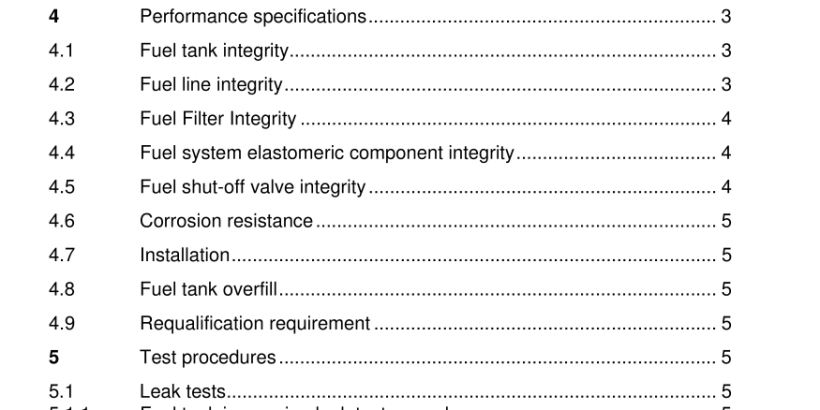ANSI B71.10-2018 pdf download.for Off-Road Ground-Supported Outdoor Power Equipment – Gasoline Fuel Systems – Performance Specifications and Test Procedures
1. Scope
This standard describes safety specifications and test procedures applicable to the gasoline fuel systems for off-road ground-supported outdoor power equipment with spark ignition engines of less than one liter displacement. Off-road ground-supported outdoor power equipment for which this standard may apply include walk-behind and riding lawn-mowers, snow throwers, powered log-splitters, shredders/grinders and tillers. The effective implementation date of this standard shall be two (2) years after the publication date and shall apply to all products built after that date. Manufacturers may also comply with the requirements of this standard anytime after the publication date. NOTE – The tests described in this standard involve the use of hazardous materials, operations, and equipment. This standard does not purport to address all of the safety problems associated with its use. It is the responsibility of the user of this standard to establish appropriate safety and health practices and determine the applicability of regulatory limitations
5.3.1. Fuel tank impact test procedure
(1) For non-metallic fuel tanks, condition the fuel tank assembly in accordance with 5.2.1. If impact testing is conducted on the same fuel tank as used in 5.2 or 5.4, and follows either test, it is not necessary to repeat conditioning.
(2) The fuel tank assembly shall be rigidly attached to either the product or a test fixture using the production fuel tank mounting fasteners. The product or fixture shall be secured so as to minimize movement during impact. The product or fixture should allow the fuel tank to be multi-positional, allowing for vertical impacts to be conducted on all test surfaces. If the fuel tank assembly is not rigidly attached in the application it may alternatively be placed in a way that movement is minimized during impact, such as in a sand bed.
(3) Determine and mark the areas to be impacted on the fuel tank assembly. Use good engineering judgement to determine the number of impact areas for surfaces with minimal material or directional changes. Fuel tank features, such as corners, seams, the filler neck and mounting bosses should be considered as impact areas. Fuel caps shall also be impacted.
(4) Seal all fuel cap vents and fuel tank openings to prevent leakage when the fuel tank is full and mounted in all positions. Where possible, tank openings should be sealed in a manner consistent with actual assembly connections. Fill the fuel tank to the manufacturers recommended capacity with a mix of antifreeze and water to prevent freezing.
(5) Cold-soak the fuel tank assembly for 24 hours, or until the tank and fluid mixture temperatures are stabilized at the temperature outlined in Table 2.
(6) Immediately upon removing the fuel tank assembly from the cold-soak, conduct impact testing. Using a 50.8 mm (2 inches) diameter smooth test sphere weighing 0.54 kg (1.18 lbs), impact the fuel tank assembly at the designated impact areas from a vertical position. Use of a tool, such as a PVC tube, to guide the test sphere to the impact area is permitted. If the fuel tank assembly mounting does not allow for a direct vertical impact, the test sphere may be suspended by a cord and allowed to fall from rest as a pendulum and strike the impact area. In either case the vertical travel of the test sphere shall be 1295 mm (51 inches). Use good engineering judgement to assure that the cold-soak temperature is maintained throughout testing. Re-soak the fuel tank assembly as needed to maintain the required temperatures.ANSI B71.10-2018 pdf download
